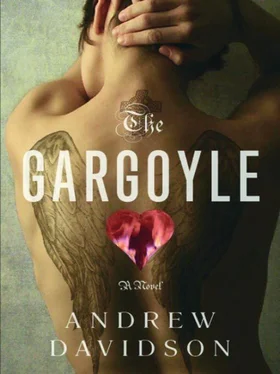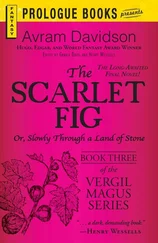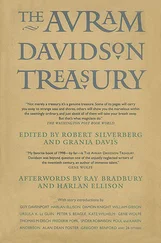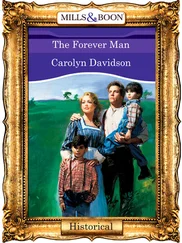I had been certain that Marianne Engel was schizophrenic, but given her description of her work habits I now had to consider that she might be manic-depressive instead. Evidence was mounting in that direction: when I first met her, she was fatigued and darkly attired; now she was bright in both dress and personality. Schizophrenics tend to eschew talking, sometimes remaining completely silent for hours on end, but Marianne Engel was just the opposite. And there was the nature of her work. Many manic-depressives achieve fame in the arts because the condition itself provides the fervor necessary to create something monumental. Which, of course, was exactly what Marianne Engel did: create monuments. If her account of her carving habits was not a description of a manic at work, I can’t imagine what is.
But there was also so much evidence for schizophrenia. She described the voices that came out of the stone, giving her instructions. She saw herself as a channel of the Divine, and her work as a circle of communication between God, the gargoyles, and herself. This is not to mention her Engelthal “past” and her belief that Inferno was appropriate reading material for the burn ward. In short, there was very little in her life that was not touched in some way by Christianity, and, as previously noted, schizophrenics are often preoccupied with religion.
Statistics could argue for either condition. Schizophrenia tends to affect men more often than women, but more than eighty percent of schizophrenics smoke heavily, and Marianne Engel was constantly popping out of the burn ward for a nicotine hit. And while speaking to me, she always had that unnerving stare, which kept her eyes locked upon mine: this only started to make sense after I read in one of Gregor’s books that schizophrenics rarely blink.
Refusal to take one’s medication is common to both conditions, but for different reasons. A manic-depressive is likely to refuse her meds because in her high she becomes convinced that a low is no longer possible, or she is so addicted to the high that the low becomes simply the price that must be paid. Schizophrenics, on the other hand, tend to refuse medication because they believe they’re being poisoned-a claim that Marianne Engel had made on more than one occasion.
Many doctors are now convinced that the two conditions co-exist far more often than commonly diagnosed, so maybe both diagnoses applied.
In the hours I spent leafing through mental health texts in an effort to understand her better, I came to understand myself better as well-and I was not altogether pleased with what I learned.
I was constantly measuring her pain against my own, telling myself that she couldn’t possibly understand my physical anguish while I did understand the nature of mental pain. And while many mental illnesses are treatable with the correct medication, there was no pill that would allow me to pass for normal. A medicated wack job could blend into the crowd but I would always stand out like a burnt thumb from the fist of humanity: this made me feel like the winner in a competition that didn’t really exist.
· · ·
Marianne Engel arrived the next day in a simple white dress with open-toed sandals, and she might have passed for a woman from a seaside village on the Mediterranean. She appeared with two food hampers, one blue and one white, and I could tell they were heavy from the way she lugged them into the room. Bent over as she was, the arrowhead on her necklace bobbed in and out of the V-neck of her dress like a lure on a fishing line. “I’m finally going to live up to my promise to feed you.”
I’ll take a moment to explain why Dr. Edwards would allow a visitor to bring food into the burn ward. In addition to the psychological benefits of a picnic (as it were), there was also a physical one. With my healing came a condition known as hypermetabolism: a body that normally requires two thousand calories a day can consume seven thousand after a severe burn. Despite the nasogastric tube that constantly delivered nourishment directly into my stomach, I was still not getting enough and I was allowed, even encouraged, to eat extra food.
Marianne Engel had previously brought me snacks, but it was obvious that this meal was far more substantial. She opened the hampers-one for hot items and the other, packed with ice, for cool-and started to lay out the food. There was a freshly baked round of focaccia, still smelling of wood smoke, and bottles of olive oil and balsamic vinegar. She danced a swirl of black across the surface of the yellow, and then dipped a chunk of the focaccia into the leoparded liquid. She said the familiar prayer before she lifted the bread to my mouth: “Jube, Domine benedicere.”
She’d also brought cheeses: Camembert, Gouda, blue, Iranian goat. She asked my favorite and when I picked the goat, she smiled broadly. Next, some steaming wraps that looked like crepes but had a most bawdy smell. Gorgonzola pancakes were not for everyone, she explained, but she hoped I liked them. I did. There were cantaloupe balls wrapped in thin slices of prosciutto, the fruity orange peeking through the meaty pink.
She continued to excavate the hampers. Bastardly plump green olives, fat with red pimiento stuffing, lounged contentedly in a yellow bowl. A plateful of tomatoes soaked in black vinegar with snowy nuggets of bocconcini. Sheaves of pita and cups brimming with hummus and tzatziki. Oysters, crabs, and scallops drowning a wonderful death in a marinara ocean; little wedges of lemon balanced on the plate’s edge like life preservers waiting to be thrown in. Pork sausages with peppercorn rims. Dolmathes, trying hard to be swarthy and macho in their little green suits, scented with sweet red wine. Thick rings of calamari. Souvlaki shared skewers with sweet buttered onions and braised peppers. There was a shoulder of lamb so well cooked it fell apart if you only looked at it while thinking about a fork, surrounded by a happy little family of roast potatoes.
I sat trapped under the culinary avalanche, unable to move for fear of tipping a plate over. “There’s no way we can eat all this.”
“Finishing isn’t the point.” She pulled a bottle out of the chilled hamper. “Besides, I’m sure the nurses will be happy to help with the leftovers. You won’t tell them I was drinking alcohol, will you? I like retsina because you can taste the earth in it.”
The nurses soon hovered around the door like a flock of hungry seagulls. I felt a strange manly pride, the one we get when being seen on a date with a beautiful woman. The nurses giggled and made a few comments before dispersing to their rounds. Marianne Engel lifted morsel after morsel to my lips. “Try this… You’re going to love it… Have more.”
We made a determined effort, but it was predestined that we’d never be able to finish the meal. When we gave up, she brought out a slim metal thermos and poured Greek coffee into two demitasses. It was so chuggingly thick that it took a good thirty seconds to pour out. Then she brought out the dessert: baklava so honey-dense that it oozed like a charitable beehive. Tricolor gelato, green white red. And of course bougatsa, her dog’s namesake-light brown pastry with custard between layers of phyllo.
“Would you like to hear a story?” Marianne Engel asked. “It’s got true love, brotherly devotion, and arrows that find the mark.”
“Is it about you again?”
“No, it’s about my good friend Francesco Corsellini.”
If there was one thing that Graziana knew for certain, it was that her beloved Francesco was a good man. He was a blacksmith in their hometown of Firenze and he toiled at his craft, always trying to forge a better horseshoe or a stronger sword. Sometimes he lost track of the hours and stopped only when Graziana appeared in the door of his shop to suggest that he pay a little less attention to his fire and more attention to his wife. She joked that he must have done something very bad in his past life to be preparing so diligently for Hell. He would laugh, promising to come right away, and Graziana would laugh, too. She knew that Hell was the last place her husband would end up.
Читать дальше











